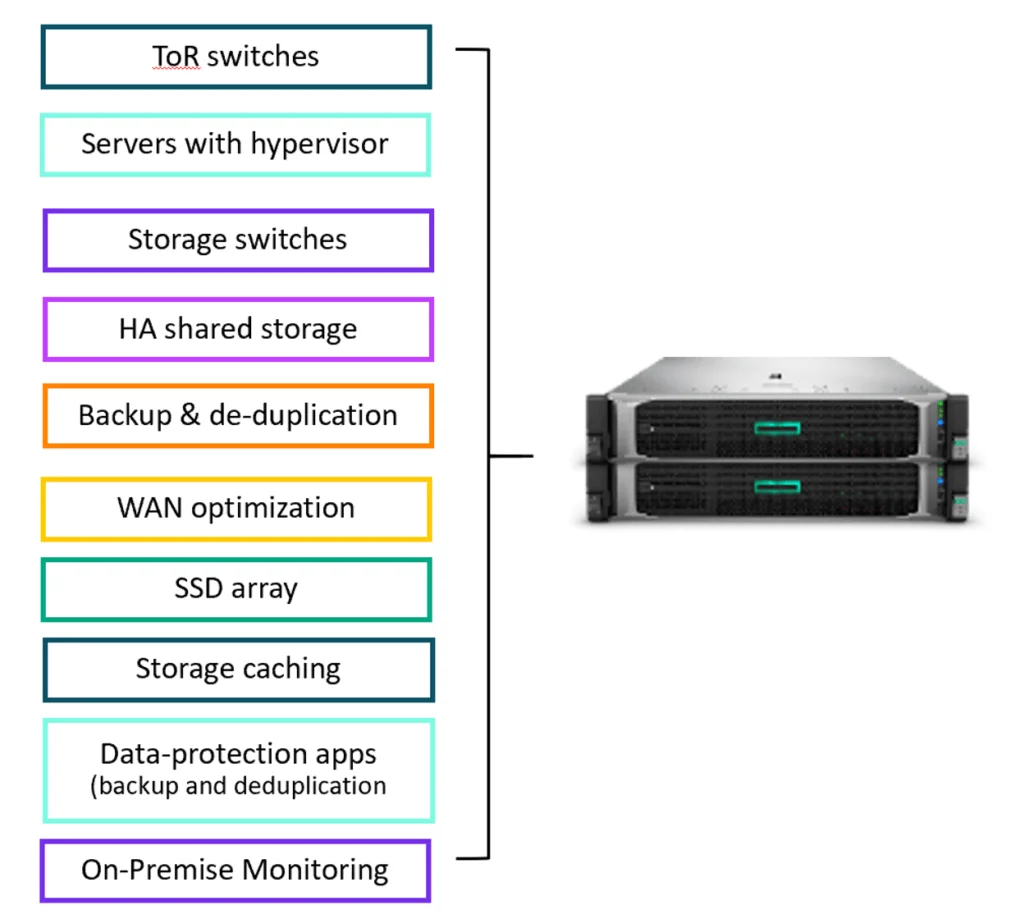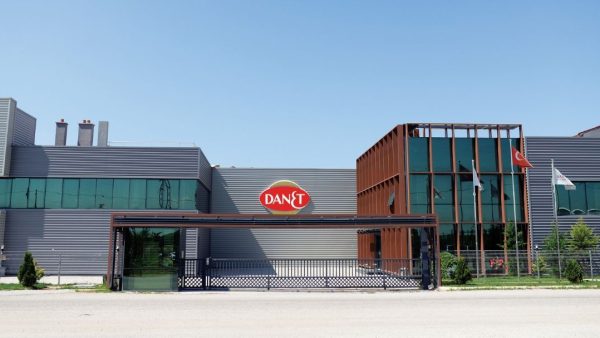HPE Simplivity (Hyper Converged Infrastructure – HCI)
Why do people need hyperconverged systems? (What are the problem domains, for example, backup, snapshot taking, etc.)
How do hyperconverged systems solve these problems with their capabilities and how do they do it, the dubious aspects of the technology, what they are and how can we explain them, for instance, performance.
When a customer prefers hyperconverged systems, why shouldn’t they continue with traditional architecture, or how should they continue? Examples through figures, and ultimately, who is the market audience that hyperconverged systems address.
Introduction to the HP Simplivity product family.
In today’s world, companies’ primary priority is the speed of service availability. (Companies are interested in solutions to meet this speed) To achieve this, it requires a strategy of new generation applications and technologies (platforms).
Creating a suitable IT environment today depends on these concepts; Speed, flexibility, and scalability. Your infrastructure needs to be suitable for all these to host your applications or data in your datacenter on-premise or in the cloud without any problems.
Today, we have 2 options for our virtual machines;
- Hyper-converged infrastructure, an evolution of integrated systems and modern management architecture, scalability, disaster recovery, backup, and storage performance is a logical step to increase the efficiency of company operations.
- External Storage, used for unforeseen IT operations. SAN architecture is ideal for complex workloads and critical business applications. However, it requires continuous adjustment between SAN management, platform management, and platform connection layers, making the cost unpredictable.
We will focus on the first option here. We will examine a structure where VM management is simple and the platform itself is self-repairing.
Why HyperConverged?
Easy Setup; Software-defined infrastructure abstracted from hardware – Centrally organized single pool of resources.
Management Ease; single management panel – Automated processes with policy-based rules.
Easy to Scale; Storage as pre-calculated capacity and determination – Can start with low capacity and be increased gradually later.
HPE SIMPLIVITY HYPERCONVERGED OVERVIEW
Simplivity is designed and integrated on the HPE Proliant, the world’s most secure industry-standard server portfolio. It simplifies by combining all (Server, hypervisor, SAN, storage, WAN optimization, backup, disaster, etc.) data services. This platform used to run VMs is a structure that is easy to install, simply scalable with a single hypervisor, single panel, and a single expert friend.

Meet HPE SimpliVity
A solution that has moved away from old structures, offering flexibility and performance with a software-based single solution. A product that creates resource flexibility, capable of backing up and disaster recovery, performing inline dedupe and compression. Provides ease of management with a single vCenter interface.

The fundamental technology of the HPE SimpliVity infrastructure is to provide a data virtualization platform by creating a resource pool across multiple sites.
Guaranteed Data Efficiency
It is the real-time deduplication and compression of data across all data layers once and for all.
This is achieved with the support of the HPE Omnistack card, which has a PCI card on it. All these processes are done with 0% performance impact on VMs.
Flexibility, Backup, and Disaster Recovery
All data protection is built-in at the virtual machine level. Your team can easily back up, restore, and move VMs without worrying about the underlying storage infrastructure. They can simply right-click in vCenter or use orchestration tools like VMware vRealize Automation and press “backup,” “restore,” or “move.” We guarantee that you can restore a local 1 TB VM in a minute or less. On top of this, a recent study by IDC found that 70% of our customers reported improvements in backup/recovery and DR and the majority eliminated the use of existing third-party backup or replication tools after deploying HPE SimpliVity hyperconverged infrastructure.
Global VM-Centric Management and Mobility
Our approach to management is also unique. With global VM-centric management, the days of managing LUNs, shares, and volumes are gone. Instead, all management is done at the VM level with a single view across all data centers and remote sites. Our unique file system abstracts VMs, policies, and management from the underlying hardware. The system is designed to be simple and easy to manage, so IDC reported that our customers spent 81% more time supporting new projects.
HPE Simplivity – Terminology
- HPE Simplivity HyperConverged Node: An x86 server which is the basic hardware building block of the HPE SimpliVity hyperconverged infrastructure solution. There are 2 models; HPE Simplivity 380 and HPE Simplivity 2600. HPE offers Simplivity nodes in 2 different models.
- Simplivity 380: A node developed on HPE’s most sold model. HPE DL380 series is actively used in many datacenters today. HPE has combined its experience on servers with Simplivity.
- Simplivity 2600: HPE Simplivity 170 Gen10 and HPE Simplivity 190 Gen10 servers are optimized more for ROBO environments.
- HPE OmniStack Virtual Controller (OVC): The software that is applied as a single virtual machine per node and controls all aspects of the HPE SimpliVity hyperconverged infrastructure. This virtual machine is very critical. This is because it is directly connected to the Omnistack Accelerator Card and also manages the datastores.
- HPE OmniStack Accelerator Card (OAC): A PCIe-based card within the HPE SimpliVity hyperconverged infrastructure solution that manages and accelerates write and data management functions. This card is one of the most important devices that distinguish Simplivity from other hyperconverged solutions. The real-time deduplication and compression performed on the card are among its most important features.
- HPE SimpliVity Data Virtualization Platform (DVP): The Data Virtualization Platform architecture abstracts hardware from virtual machines while linking the hardware and hypervisor. This layer also hosts an accelerator card for data deduplication and compression, and optimizes all inline data from the outset.
- HPE SimpliVity Cluster: A Simplivity cluster consisting of one or more Simplivity nodes. Physical servers within the Simplivity Cluster are interconnected via a standard ethernet network and create a shared datastore necessary for vSphere HA, formed from physical disks on the nodes, using an NFS datastore. An HPE SimpliVity cluster can also be extended to two physical sites (locations), typically known as a Stretched Cluster, across low-latency metro networks for disaster recovery and business continuity.
- HPE SimpliVity Federation: A unit managing one or more Simplivity Clusters and their data.
- Intelligent Workload Optimizer: A feature of the HPE Simplivity Cluster. It is a solution that balances loads to maximize the efficiency of CPU, Memory, and disk resources. It consists of two sub-components: the Resource Balancer Service and the VMware DRS/Microsoft SCVMM Pro Integration service.
- OmniWatch: A proactive support service that monitors your entire HPE Simplivity infrastructure. It continuously evaluates system health to automate support processes. OmniWatch checks over 100 indicators.
- HPE SimpliVity Arbiter: An agent software installed on Windows that prevents service interruption or loss of data access when two independent hyperconverged systems configured in a pool lose network connection. The location where this software is run is not significant; if Arbiter communication is interrupted, availability may be at risk.









